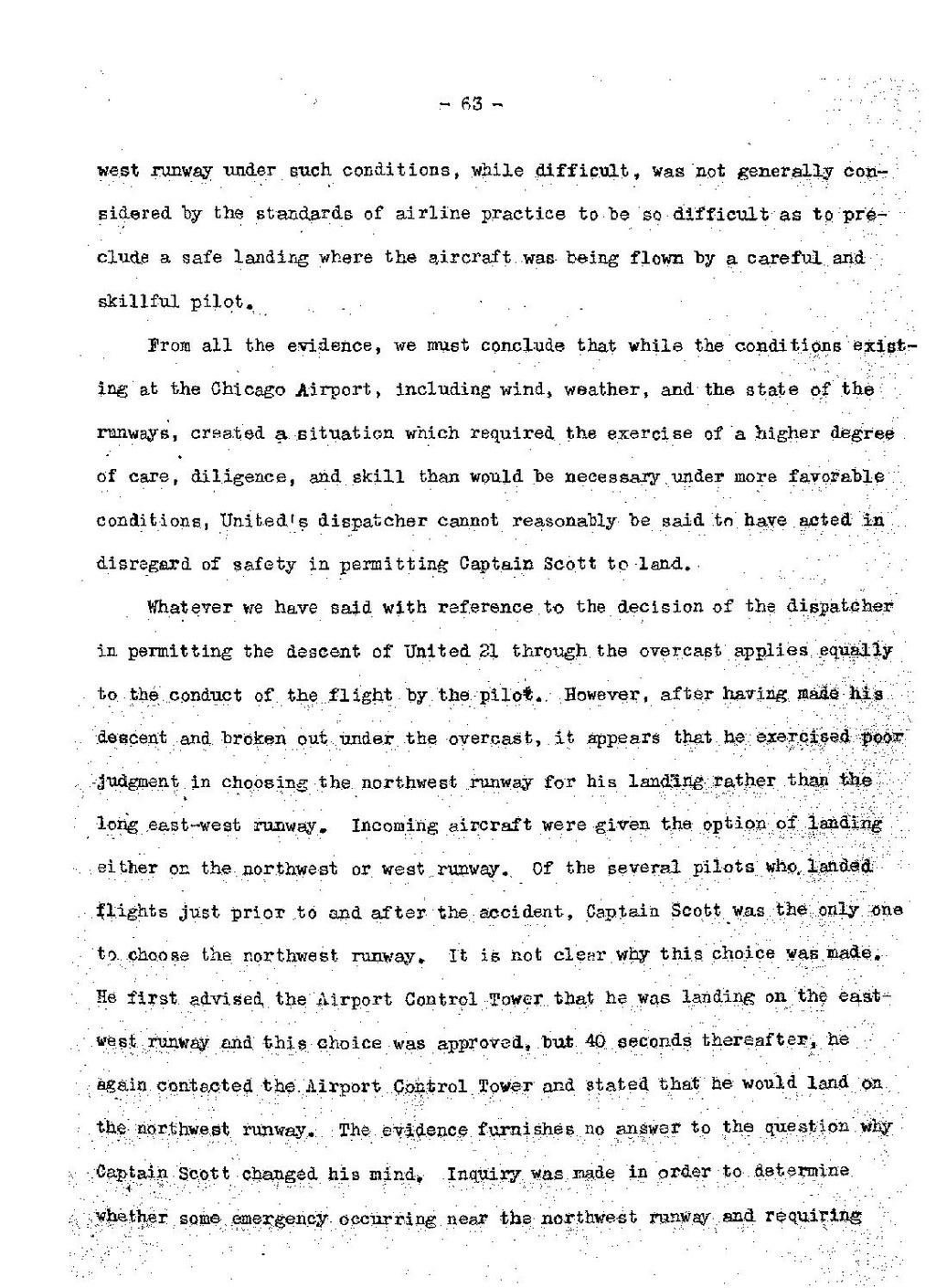- 63 -
west runway under such conditions, while difficult, was not generally considered by the standards of airline practice to be so difficult as to preclude a safe landing where the aircraft was being flown by a careful and skillful pilot.
From all the evidence, we must conclude that while the conditions existing at the Chicago Airport, including wind, weather, and the state of the runways, created a situation which required the exercise of a higher degree of care, diligence, and skill than would be necessary under more favorable conditions, United's dispatcher cannot reasonably be said to have acted in disregard of safety in permitting Captain Scott to land.
Whatever we have said with reference to the decision of the dispatcher in permitting the descent of United 21 through the overcast applies equally to the conduct of the flight by the pilot. However, after having made his descent and broken out under the overcast, it appears that he exercised poor judgment in choosing the northwest runway for his landing rather than the long east-west runway. Incoming aircraft were given the option of landing either on the northwest or west runway. Of the several pilots who landed flights just prior to and after the accident, Captain Scott was the only one to choose the northwest runway. It is not clear why this choice was made. He first advised the Airport Control Tower that he was landing on the east-west runway and this choice was approved, but 40 seconds thereafter, he again contacted the Airport Control Tower and stated that he would land on the northwest runway. The evidence furnishes no answer to the question why Captain Scott changed his mind. Inquiry was made in order to determine whether some emergency occurring near the northwest runway and requiring
